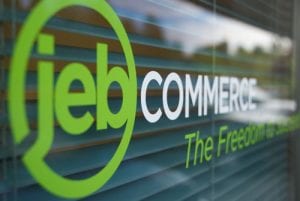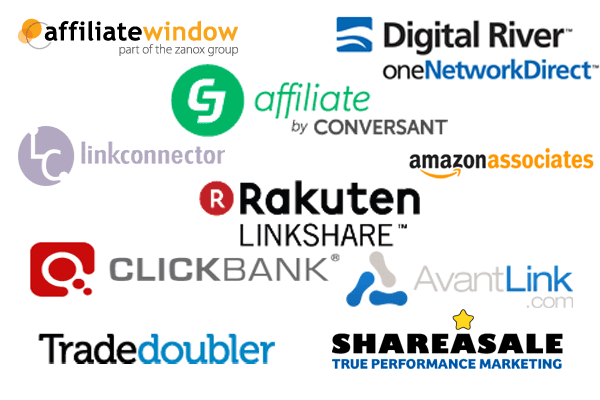 When we reached out from Seattle beyond the peaks of Snoqualmie Pass to interview Affiliate Marketing expert, Jamie Birch, the 43-year old triathlete answered his cell phone on a racing bike while ascending a steep incline just outside Coeur d’Alene.
When we reached out from Seattle beyond the peaks of Snoqualmie Pass to interview Affiliate Marketing expert, Jamie Birch, the 43-year old triathlete answered his cell phone on a racing bike while ascending a steep incline just outside Coeur d’Alene. We delved into all of those questions once Jamie was safely back at his computer inside JEBcommerce, the firm he founded and that has overseen more than 250 web affiliate programs driving close to $120 million dollars in sales per year for clients like Johnston & Murphy, Eastern Mountain Sports, Speck, Le Tote, Plant Therapy, and Bodybuilding.com, and paying out millions in commissions to more than 10,000 affiliates in shared revenue.
Seattle24x7: So lesson #1 is that affiliate marketing is “omnichannel,” and lesson # 2 is that by being a knowledgeable affiliate manager, you are teaching your recruits how to be more effective marketers?
Birch: Yes, and you’re also learning from them. They are able to show you what works for them when marketing your brand. That helps you become a better marketer as well. Often times, affiliates can be testing many more things than you are as a brand, and they bring those insights to promoting your company and your products.
Seattle24x7: Let’s start at square one. Who should consider an affiliate program for their product mix and who should not?

Seattle24x7: What are the entry costs (or cost barriers) to setting up an affiliate marketing campaign?
The beauty of affiliate marketing is that you can account for these costs from the outset and set the bar where you will be profitable on each and every sale.
So if you have 47% in profit, you can pay out a higher percentage. You can decide, for example, to pay yourself 10% in profit for every sale and reward your affiliates with 20% leaving you with 17-20% as a negotiating tool to get better placements, more exposure, inclusion in emails that the affiliates send, or more support in AdWords and other channels.
What’s different with affiliate marketing over paid search and other sales generators is that you get to decide the structure up front.
Seattle24x7: Is there a minimum affiliate commission to be considered?
If you can afford 2%, ask yourself what is your competition offering? If they’re able to offer five times what your cost structure allows you to offer, then you need to determine do they actually have that margin to work with? Or are they trying to keep you out of the market?

Seattle24x7: What would be the primary driver that makes 1% to 2% commissions appealing?
Birch: An absolutely vital metric that affiliates are looking for is “EPC” or “Earnings per 100 Clicks.” The affiliates want to know “What am I gonna earn when I send you 100 people?”
2% can be a more attractive commission than 20% if the volume is greater. As an example, almost all electronics margins are low, and so the commissions are relatively low as well. But a lot of people are looking for Xboxes, and Play Stations, and TVs and radios and Bluetooth speakers. Now, a commission of 2% on $10,000 is more than 20% on $50 bucks. You also need to factor in your site’s conversion rate. If the conversion rate is higher than competing offers, the EPC will be higher as well as more of those visitors will convert to a buyer.
Seattle24x7: Let’s talk about human resources. Once you’ve decided okay, we can make the math work, what is the best way to go about it?
Let’s be clear. It’s pretty hard to find an in-house person. This isn’t a curriculum track in college that people are learning about. Most of the good affiliate managers. like myself, have started their own agencies.
Even with an in-house person, it’s always a good idea to have an outside agency with lots of experience. Our company has been serving this market for nearly two decades. A firm like ours will work beside your team to come up with the strategies that work and bring learnings and best practices from many different brands, affiliate programs and affiliates. So you get a wider net of opportunities.
It is essential to maintain the affiliate relationship week-by-week and month-by-month. At the same time, there is an ongoing requirement to identify potential new affiliates. Get them on the phone, or get them to talk to you over email. Discover what works best for both of you.
Seattle24x7: HR-wise, who else should be part of an in-house affiliate marketing team?
Birch: To build the ideal affiliate marketing team in-house, you’re going to want to have someone who is focused on strategy, who is looking at the program from the top down. You’re going to want to have an affiliate relationship person, a person who is either activating or optimizing affiliates and doing recruiting. You’re also going to want to have an analyst who is looking at what’s going on with each partner. Who is up, who is down, and who’s new that we need to work with? In all, providing that deeper level of analysis to the team.
Another team member would be a list builder, someone who’s actively looking for new affiliates to bring in. In our agency relationships with clients, the ones that have been the most successful have an affiliate manager who is our counterpart and responsible for the affiliate program in-house. As consultants, we are able to help them with strategy and do a ton of the legwork.
The ideal agency in-house partnership is where there is someone in-house who knows all the channels, is involved in all the discussions, and is able to bring that to the table in working with our team. Without that, your agency could be running blind. The ideal scenario is to have someone within the company who has the strategy of the whole company in mind when creating the strategy for the channel.

Seattle24x7: As an affiliate management company do you work on a commision basis or a retainer?
Birch: It’s usually both. We will have a retainer along with a performance incentive. We will look at our relationship with each client and how their needs and market demands change over time. We have one client that we charge only a retainer which is an average of what we had billed for the first three years.
We’ve also had clients where we’ve felt very strongly that we could grow their channel significantly and we work solely on a percentage basis. We were able to grew their account from $9 million to $18 million in two years. It made sense to service the account for a small percentage of that volume.
Seattle24x7: This begs the question of transparency. Affiliate management companies need to have an open and trustworthy relationship with their clients, and the brands with both networks and affiliates. How is this transparency achieved?
Birch: There is a kind of mating dance and ritual that goes on where marketers are required to share the lifetime value and the short-term ROI of a customer. Sharing average order size, clickthrough rates and customer data can feel a little too extroverted at times.
What affiliate marketing has that is unique are third-party networks to intermediate and audit the transactions. ShareASale, Pepperjam, Impact, LinkShare, CJ, AltaLink, Link-Connect, they all grew up in the industry from the very early days. This tracking helps the everyone in the ecosystem trust the process because it is available to all.
The pixel references the cookie on the order, grabs the order information off of the confirmation page and sends that order to the network to report on. There are other API tracking solutions, and there are server-to-server tracking solutions as well.
Birch: In the early days, affiliates would promote a merchant, and the merchant could go bankrupt or not pay. This can still exist to a certain extent if you’re working with a merchant directly, outside of a network. There can be a degree of angst.
We have many clients who have been with us for more than five years. We’re able to show them that their goals are our first priorities.
Seattle24x7: What happens when a customer visits two affiliates along the clickpath to making a purchase? Can channel conflict arise?
Birch: Historically it’s been the practice that the last click earns the commission but that’s created huge problems. For instance, take a fan site in Chicago that is at the “top of funnel.” They’re the introducer in the path. But now, a coupon site like RetailMeNot comes in at the end, in the last ten seconds. Should they get credit for the sale?
That’s been a huge problem. The good thing is that ShareASale, Impact, Pepperjam andother networks have come up with technology that combats it. ShareASale has something they call Conversion Lines* and Leap Frog Transactions** that will allow you to filter out an affiliate that comes in the last x amount of minutes.
They also have a Conversion Line that allows you to say, if this group of affiliates or this affiliate, in particular, is in this chain, they should get 100% of the sale or another percentage of the sale.
Pepperjam has a preferred affiliate program, so it will allow an affiliate who is always the introducer, to get the commission. Impact has a bunch of different technologies that let you see how many affiliates are in the stream and what other channels may be involved in the sale.
Seattle24x7: So splitting commissions on the path to a sale is not uncommon?
Birch: Splitting commissions, or awarding commissions further up the funnel, say to the introducer or influencer of the sale, is not uncommon today. Impact, ShareASaleand Pepperjam all offer solutions to allow this to happen.
Seattle24x7: Where does the Google juggernaut figure into the affiliate marketing process? In Search, there has been a noticeable migration from SEO visibility to paid advertising on the search results page. Is Google also the 800-pound gorilla in affiliate marketing?
Birch: I think the Panda and the Penguin updates rocked our industry to the ground. There were affiliates who lost 80% of their revenue because of that change in the algorithm. So the way that Google interjects themselves into this channel is through their search algorithm.
They are constantly looking at affiliates that are light and thin, that are adding very little value, and that are easily reproducible and kicking them out of the index.
I personally thought Google would intervene even more when they bought two companies: Performix and DoubleClick. Performix turned into a Google affiliate network for a while. That worried a lot of affiliate marketers because Google owned all the search data and now they had affiliate data as well. It would have been easy for them to really own the space. Surprisingly, they closed the whole program down. They didn’t sell it, they just closed it down.
Birch: It really forced all of us to get better at what we do and to focus on the consumer. As an affiliate, we have to constantly ask ourselves: What’s our product? Who are we serving? What problem are we solving for them?
Seattle24x7: Historically, affiliate marketing actually predates Google?
Seattle24x7: Given the complexity and sophistication that has come to define affiliate marketing, it does not seem like a system that a company ought to do on its own, or go it alone?
As an agency, we can build into your costs exactly the service level that you need, from high-end strategy to lower-level administrative work. It all comes down to sourcing. How do you find great solutions and great people? I can tell you, I’m hiring right now! [24×7]






















